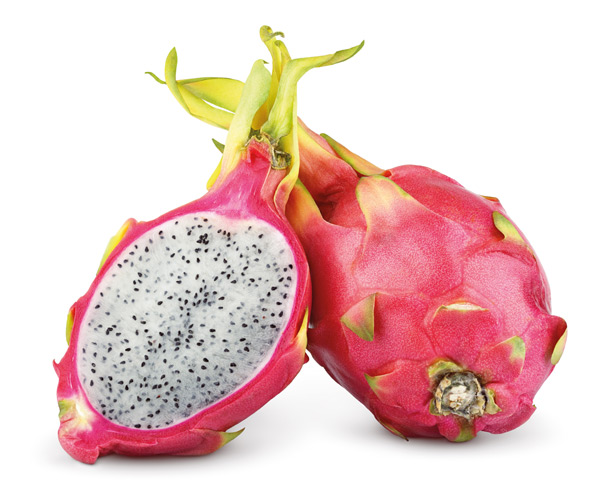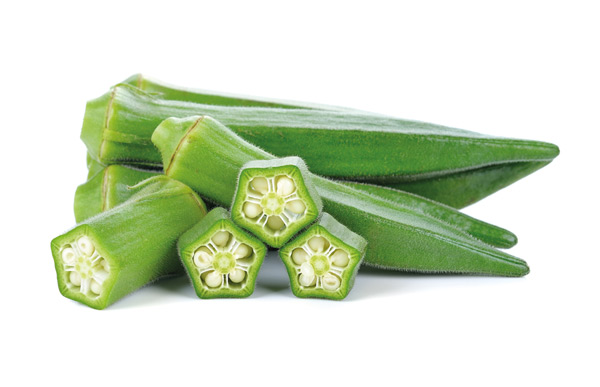During your weekly shop for groceries, have you ever been curious about the array of strangely exotic fruit and vegetables? Strolled through your supermarket and noticed peculiar-looking produce that has made you turn to more familiar territory? Qatar’s grocery stores are bountiful with fresh produce from around the globe waiting to be discovered, some of which may look odd, unfamiliar or even downright scary. However, looks can be deceiving and underneath the façade, these fruits and vegetables hide an inner deliciousness that will expand your culinary repertoire.
From the subtle sweetness of dragon fruit to the slight spiciness of kohlrabi, there’s something to suit everyone’s taste buds. Worried about what to make with your newly purchased produce oddity? The internet is a great place for exploring recipes. Step out of your comfort zone and try these new flavours, textures and shapes. Weird? Perhaps. Wonderful? Definitely!
Rambutan
With soft, harmless bristles, the golf-ball-sized rambutan looks like a small, hairy pet that fits snugly in your hand. A native of tropical South East Asia, the name is derived from the Malaysian word for, you guessed it, hairy. Closely related to another South East Asian favourite, the lychee, it has a similar taste with a white, sweet and creamy flesh.
Health benefits: High in vitamin C, iron, phosphorus and dietary fibre.
Try it: Peel the skin, remove the seed and eat it as you would any stone fruit. It also goes well in fruit salads, jellies, desserts, smoothies or even cooked in curries and savoury dishes.

Prickly Pear
The edible fruit bulb of the cactus plant, prickly pear grows in desert-like conditions and is cultivated in countries such as the US, Mexico and Australia. The outer skin has small, sharp spines that need extra caution when handling. The fruit inside is a luscious, yellow or purple hue, juicy and mildly sweet.
Health benefits: Superfood alert! Trendy health-conscious groupies have proclaimed this fruit a major player for the superfood bucket list. The prickly pear reportedly stabilises blood sugar and has anti-inflammatory properties. It is high in fibre, vitamin C, magnesium and potassium.
Try it: Carefully remove the skin and spines, puree, strain and add to fresh lemonade. Try prickly pear in vinaigrettes and jellies.

Dragon Fruit (Pitaya)
This fruit is not related to those mythical creatures, dragons, but is also fruit from a type of cactus. The beautifully bright pink bulb has either white or purple flesh with tiny black, edible seeds. The flesh is mildly sweet and crisp with a pear-like flavour. Indigenous to Central America, it is also grown in South East Asian countries such as Thailand and Vietnam.
Health benefits: Dragon fruit is an excellent source of iron, dietary fibre and vitamin C.
Try it: Peel the skin, slice the flesh and use in fruit salads. It also makes a beautiful garnish.

Horned Melon ( Kiwano)
Native to Southern Africa, this fascinating fruit may look scary and reptilian with its spiky, horned skin but it’s officially a member of the not-so-frightening melon and cucumber family. Pear-sized with bright orange skin, inside you will find an explosion of edible sweet and tart seeds encased in a green jelly-like substance.
Health benefits: Super hydrating and with good amounts of vitamin C, iron, magnesium and phosphorous. The gelatinous texture is reportedly beneficial for—ahem—keeping the digestive system moving.
Try it: Cut in half, scoop out the inside and add to fruit salads, sauces, salad dressings and sorbets.

Bitter Gourd (Karela, Bitter Melon)
The name says it all. Cultivated in tropical parts of the world such as Asia, South America, the Caribbean and some parts of Africa, bitter gourd really is quite bitter and frankly not the most attractive vegetable on the market stand. Bumpy and cucumber-shaped, it is in the same food family as squash and melon. Widely used in Indian cuisine, you can turn this versatile veggie into a dish of deliciousness.
Health benefits: With a long history of medicinal purposes, bitter gourd is reportedly beneficial for diabetes and blood disorders. It is a rich source of dietary fibre, vitamin C, potassium and folate.
Try it: Pickled, curried, roasted or stir-fried with meat and seafood. Pairing it with other vegetables such as tomatoes and potatoes helps reduce the bitterness.

Ladies’ Fingers (Okra)
Long and tapering, these beaked pods from the okra plant can be a little temperamental when it comes to cooking, but prepare them correctly and you will be rewarded with a scrumptious meal. Choose small pods that are blemish free, bright and crisp. Cultivated in tropical and warm, temperate regions of the world, ladies’ fingers contain a natural substance called mucilage which helps to naturally thicken sauces, soups and stews. With a mild taste similar to eggplant, okra can handle strong flavours from curries and spices. When cooked, the inside can turn gooey and a little slimy. This vegetable is popular in Indian, Cajun and Caribbean cuisines.
Health benefits: High in fibre, vitamin C, vitamin K, folate, manganese and omega-6 fatty acids, recent findings suggest that okra helps to reduce cholesterol.
Try it: Pickled with chiles and garlic. It can also be fried, stewed, pickled, grilled or curried.

Romanesco
Originating from Italy, the seemingly unearthly Romanesco is a magical feat of nature’s engineering and design with its incredible fractal patterns and spirals. Part of the brassica family—think cauliflower and Brussels sprouts—Romanesco is an edible flower bud that has a flavour similar to broccoli. If your child is not a big fan of anything green, perhaps this fun and funky vegetable will change their mind?
Health benefits: It is loaded with vitamin C, vitamin A, vitamin B6, potassium, calcium, iron, magnesium and a good amount of dietary fibre and protein.
Try it: Drizzle with a bit of olive oil, season with salt and pepper and roast at 220°C for 15 to 20 minutes.

Taro Root
This starchy tuber comes from the taro plant and is believed to be native to South East Asia. Popular in cuisines around the world and used much like a potato, taro has a rich, nutty flavour. The flesh has a slight purple hue and is known to cause irritation or itchiness when handled or consumed raw, so be sure to cook it thoroughly.
Health benefits: With a low glycemic index, taro is a great source of dietary fibre, vitamin E, vitamin B6 and manganese.
Try it: Just as you would yams or sweet potatoes. It can be used in sweet or savoury dishes.

Kohlrabi
This bulbous brassica from Northern Europe is also a cruciferous vegetable. Bulb-shaped with protruding shoots and slightly spicy with a texture similar to a radish, it is equally tasty raw or cooked.The leaves are also edible.
Health benefits: Kohlrabi is a good source of dietary fibre, vitamin C, vitamin B6 and potassium.
Try it: Peel the thick outer skin with a vegetable peeler, grate the inner flesh and add to a vinegar-based slaw.




